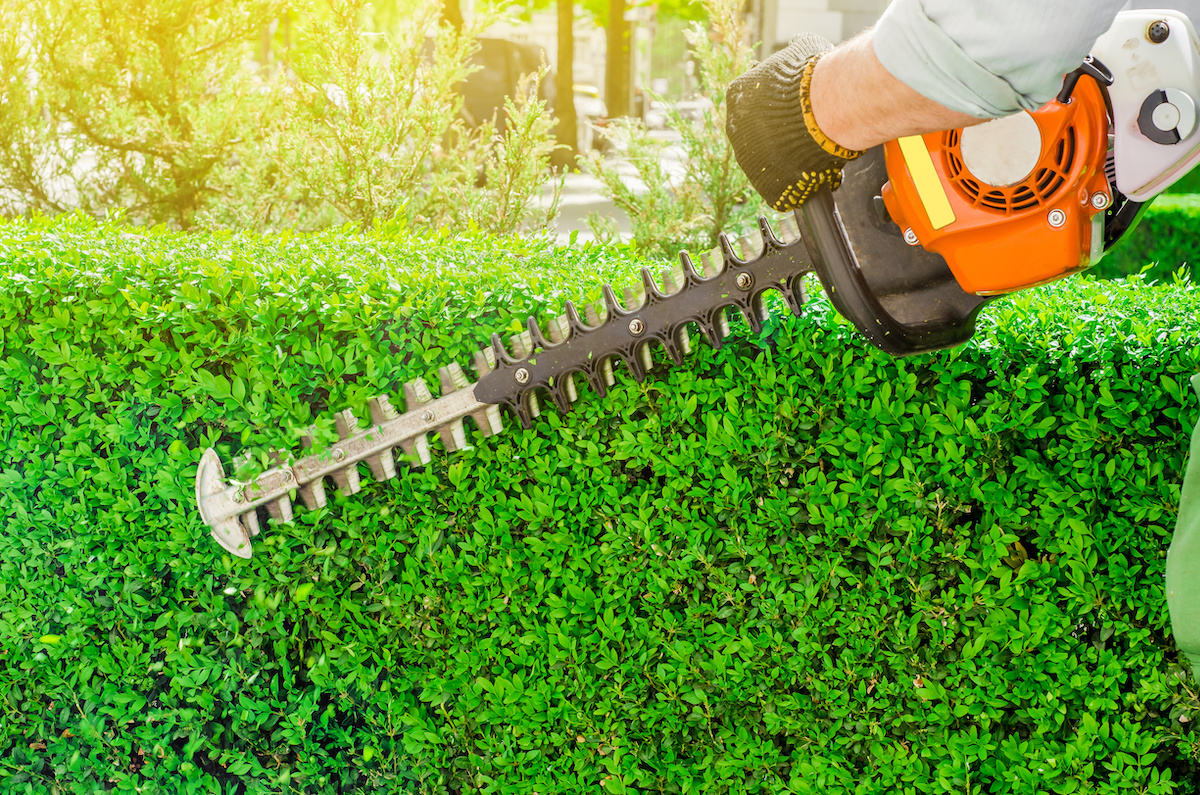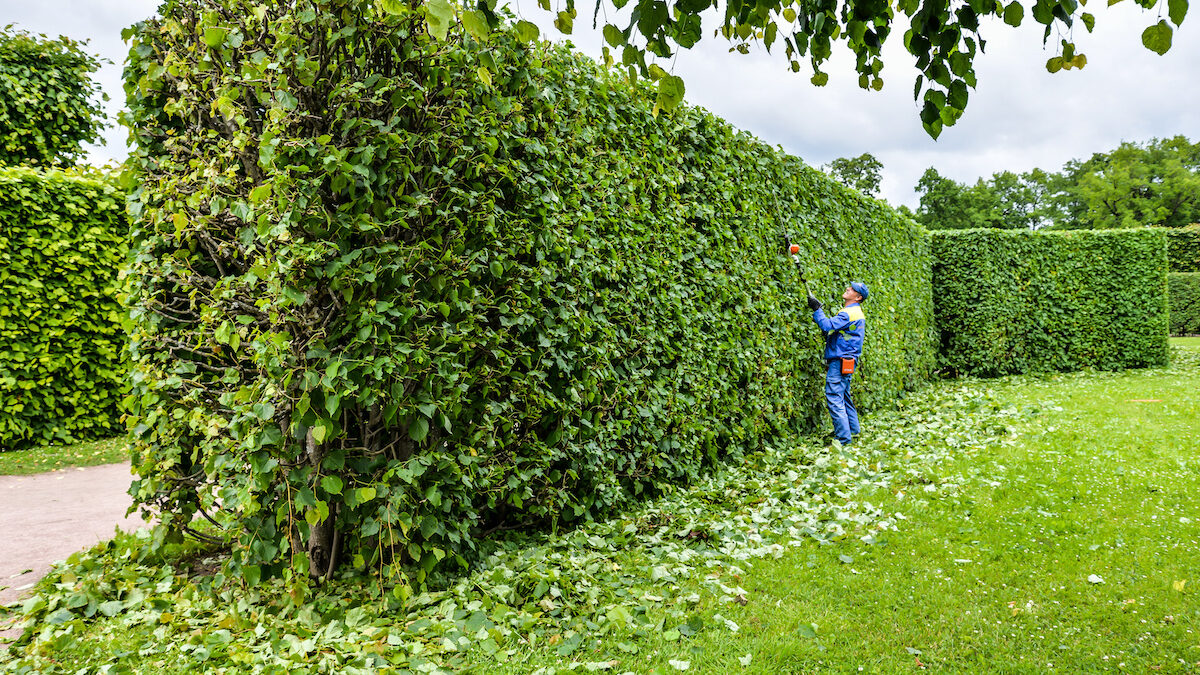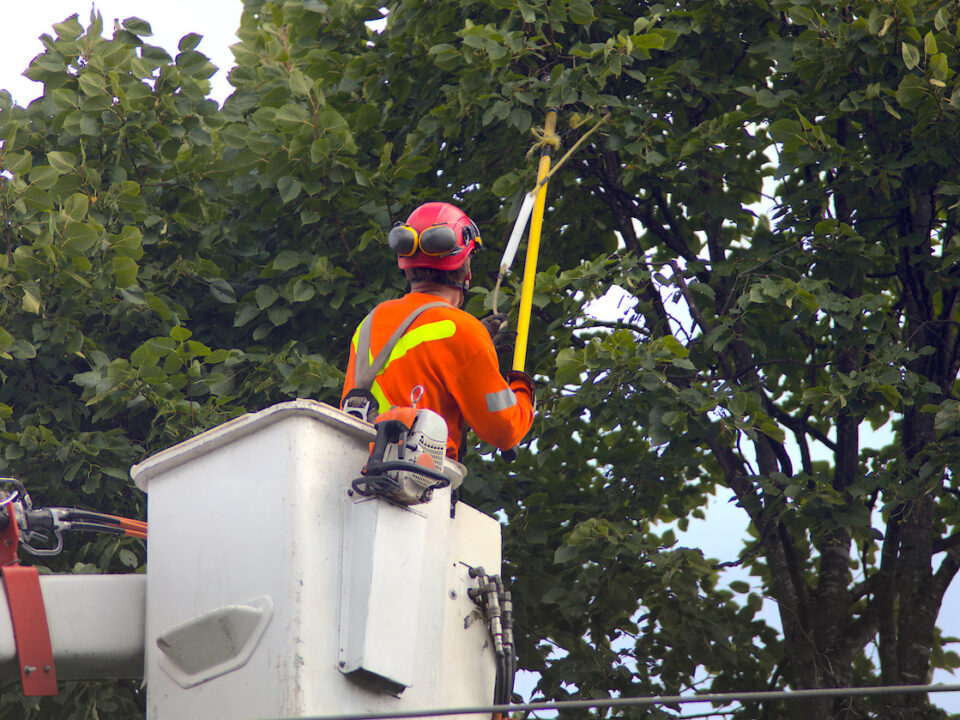Nothing makes a home look more polished than a row of perfectly manicured hedges. This simple addition to your landscaping can improve the comfort of your home and boost your curb appeal.
Keeping your hedge well-maintained doesn’t have to be difficult or time-consuming especially if you hire a professional to tackle the job for you. However, keeping your hedges healthy with hedge trimming is crucial since neglected hedges will become an eyesore in no time.
So what are the advantages of having hedges in your yard, and how do you take care of them?
The Benefits of Hedges in Your Landscaping
A landscape hedge is a row of similarly sized trees, shrubs, or other plants which are planted close together to create a sort of barrier. Hedging can be anything from a short row of shrubs under your window to a towering line of trees lining your driveway. However, a key element to any hedging is a tight, neat manicured appearance.
Hedging shrubs and trees can have many benefits for your landscaping. This is including privacy and increased property value. They can also help keep your home cooler in the summer, which is a welcomed feature here in sunny Florida.
Depending on the species you choose, the hedging shrubs you plant can provide different benefits to your landscape. They can hide unsightly elements like sheds or garages, block noise, and provide privacy. Additionally, they are easy to maintain and come in a variety of styles, shapes, and sizes to meet the needs of any property.
There are many different types of hedges that you can choose for your yard. Some of the most common ones are boxwood, yew, holly, and privet. They each have a unique look and can be used for different purposes in your landscape.
For example, here are a few types of hedges that grow well in Florida’s harsh climate and the ways they can improve your property:
- Boxwood is very easy to maintain and grows very quickly, making it a good choice if you are looking for a quick fix.
- Yew grows very slowly but can reach up to 60 feet tall, making it a good option if you need something to provide shade in your yard.
- Arborvitae grow tall and thick to help protect your home from wind and buffer sound
- Clusia grows great in shadier spots with indirect sunlight.
- Gardenia, Hibiscus, and Jasmine all feature beautiful blooms with a strong fragrance to make your property smell fantastic.
If you have these types of plants on your property, you’ll know that hedge trimming is critical for their care and appearance.
Here are a few helpful hedge trimming tips for Florida homes.
1. Use the Right Tools For the Job
Gas-powered trimmers used to be the best option for large trimming jobs. Meanwhile, modern electric or battery-powered options can be just as powerful without the hassle of refueling. Consider the size of your yard and the thickness of your shrubbery to decide what type will work best for you.
Whatever option you choose, look for a trimmer that has safety features such as an auto shut-off trigger that stops the blade when it is released. You’ll also want a lock to prevent the trimmers from being turned on accidentally, and a front handle shield.
If you have a large amount of landscaping or very tall hedges, consider purchasing extra battery packs or extension poles to make your job easier.
Remember to always wear protective equipment when trimming your hedges. Protective gear includes gloves, closed-toe shoes, long pants, long sleeves and goggles to protect your eyes.
Having the right tools will make trimming your hedges safer and easier.
2. Keep Hedges Thick and Dense
Hedges should always be kept thick and dense. Narrow, spindly growth will cause your hedge to lose its character, as well as its functionality.
A thick, dense hedge improves your home by:
- Providing privacy
- Blocking harmful UV rays
- Providing shade for your yard
- Protecting your home from damaging winds
- Blocking out noise from street traffic or close neighbors
Don’t worry, if you have sparse, thin hedges, regular trimming will help them to become fuller.
3. Trim Regularly to Promote Growth and Health
Regular trimming keeps your hedges look neat and tidy but it is also essential for keeping them healthy. Untrimmed hedges can become brittle and more vulnerable to disease. Trimming your hedge regularly throughout the year will ensure that it remains the shape you prefer, as well as promote healthy growth.
The frequency in which you trim will depend on the type of hedge you have and how quickly it grows. But you should aim to do big trims on your hedges at least once every year. Hedges typically require maintenance pruning every 4 to 6 weeks throughout the year to keep their shape, stay tidy, and keep their length within manageable limits.
Ideally, you should do in-depth cuts in early spring or late fall when the risk of extreme heat or cold weather is lowest and your hedge has stopped growing for the season. This will help to promote healthy growth and keep your hedges looking tidy and well-maintained. It’s best to avoid trimming your hedges during times of excessively hot or cold weather as this can be stressful for them. Also try to avoid doing this during rainy weather as this will make the job much messier and harder to do.
4. Watch Out for Pests and Diseases
To prevent pests and diseases from damaging your hedge, you need to keep it healthy. In addition to regular trims, you should also fertilize it regularly, remove unhealthy growth, and pay special attention to the soil. Caring for your hedge properly will enable it to withstand pests and diseases.
The types of diseases you may encounter in your hedge will depend greatly on the type of plant it is, however a few of the most common hedge diseases are;
- Powdery Mildew- A powdery grey fungal coating that can occur when plants get too dry or don’t have proper air circulation.
- Box Blight- Caused by two different strains of fungi that come from dead leaves that are left too long under shrubbery.
- Bronze Foliage- Hedge plants can turn bronze due to extreme changes in weather, windburn, starvation, or root rot.
None of these diseases mean an automatic death sentence for your hedge, most can recover with some extra care and attention, but ignoring the problem will make it harder for your plants to recover.
5. Get Hedge Trimming from Warner Tree Service

Some people consider gardening a hobby and love to spend hours pruning their hedges. Others struggle to find the time between work and family obligations. If you don’t enjoy hedge trimming or can’t find the time to keep up with it properly consider hiring professionals to do the job for you.
Hiring tree trimmers will save you time, effort, and money in the long run. This is especially true if your hedge is large and complex, as this will require a lot of effort and know-how. Hiring a professional hedge trimmer will ensure that your hedge is properly trimmed and shaped to promote healthy growth and thickening. It will also save you hours of time and effort that you would otherwise have to invest in pruning.
Our skilled tree trimmers will make sure your hedges get the tender loving care that they need to thrive. We also offer tree maintenance, storm clean-up, stump grinding, and tree removal services. Call Warner Tree Services to schedule an appointment.




